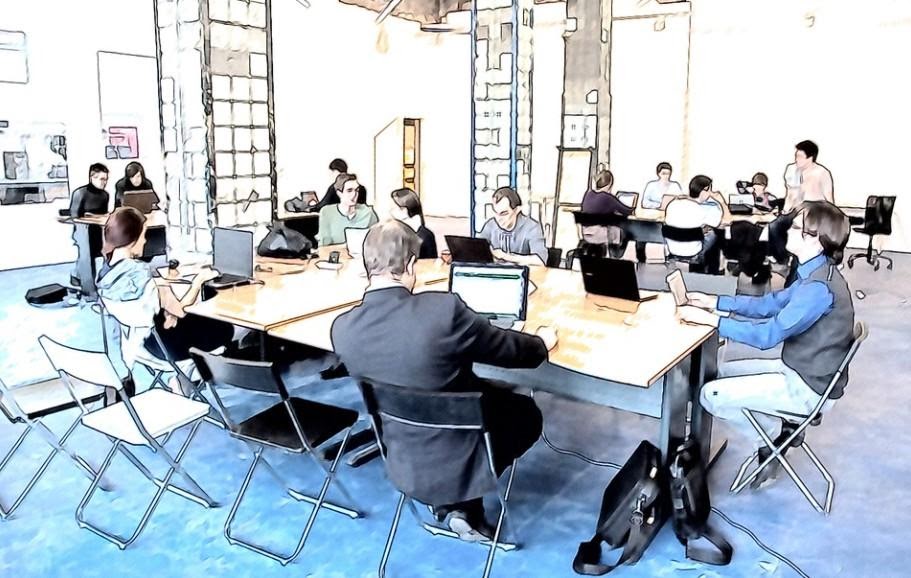
It can be challenging to put together a training and development program that is effective to both your employees, and your business. Because it takes so much time and resources, many firms outsource this work to other companies. However, if you want to make a personalized program that will best suit your branch of business, and your colleagues, as well as their types of personalities, here are some useful tips.
Identify what are your company?s goals
Pause for a moment before you begin creating your courses, tools, and training materials. Take a step back and consider the aims of the company, and where the training and development programs can help the most. If there is such a spot, try to connect your goals to the training program, to most effectively tackle the biggest problems, in as little time as possible.
Additionally, keep the company’s future strategic arrangement in mind, as well as its aims and ambitions.
Recognize competencies
Competencies are a collection of skills that contribute to an employee’s work performance. The teamwork, confidence and ethics, problem-solving capabilities, decision-making and communication are a few top competences that can be improved in a company. First, identify the competences that match your company best, and then work to improve them.
The consequences of developing skills in an organization have a direct influence on an organization’s production. In a recent research, 89 per cent of the top organizations have key strengths established for each of their positions in the organization. Their function is described as core competencies.
Analyze where the gap is
Now that you know where your staff needs to be headed, it’s essential to recognize where they are at present. You may already have this information in your HR papers, evaluations, job descriptions and more.
If not, a complete evaluation of the organization’s employees is a great start. This helps you to understand where you stand, as well as the extent of the gap.
Interview employees
Talking to your employees must be the first step when creating an effective development program. Actually sitting down and having an honest conversation with your colleagues about where the gap is, and how you can mend it, is only the beginning. Additionally, the conversation will help you have a better insight into your colleague?s mind, and maybe you even get great suggestions, or ideas, that you would not have thought of otherwise.
This chance might even be used to talk about your employees? future objectives. For example, if you want to prepare a certain employee to take on a leadership position, it’s a great opportunity to talk about it, and see if they are even interested in taking on the leading role.
Some people feel satisfied in their own job and might become uncomfortable and resentful when placed in a leading one.
As a result, it’s a good idea to simply talk to employees about the issues they’re having and develop programs to solve their concerns.
Select the right training tools
When starting a training program, it’s critical to know which training approach is best for both your company and your employees. The method in which the training is delivered has an impact on how employees learn. It also has an impact on their capacity to retain and apply the acquired abilities.
Most companies combine different approaches, to accommodate most learning types. Even though there are many tools for employee training, you cannot go wrong with good RTO materials. You can use only those, or combine them with case studies, group discussions, simulation methods, educational videos, questionnaires, and so on.
It is up to you to choose the best combination to help your employees retain the biggest percentage of what was taught.
Bring in a coach or a mentor
It’s a good idea to start a mentoring program within your company while you’re educating and developing your staff. This will allow the training and growth to have a much longer lasting effect. It will assist younger professionals in learning more quickly and progressing in their careers. It will even help to build ties within the company.
It’s crucial to find the proper mentor for the right mentee. This may be accomplished by taking into account both the mentor’s and mentee’s prior experience. The distance between the mentor and the mentee should not be too great so that the mentee may learn without feeling overwhelmed.
Measure the results
The final and most essential stage is to evaluate the results of all of the work that has gone into training the staff. The effects may not be apparent right away, but by six months after starting the regimen, you should see a change.
Were there any mistakes that were trivial? Were the employees more self-assured?
You’ll need to re-evaluate the gap to see whether there has been any progress or changes from where you started.
Training your personnel takes time and effort. However, with the proper knowledge, and the right tools, it all becomes effortless.
Mike is an Australian business consulting specialist. He?s working with companies that outsource their IT maintenance. He often writes about technology, business and marketing and is a regular contributor on several websites

As the editor of the blog, She curate insightful content that sparks curiosity and fosters learning. With a passion for storytelling and a keen eye for detail, she strive to bring diverse perspectives and engaging narratives to readers, ensuring every piece informs, inspires, and enriches.









